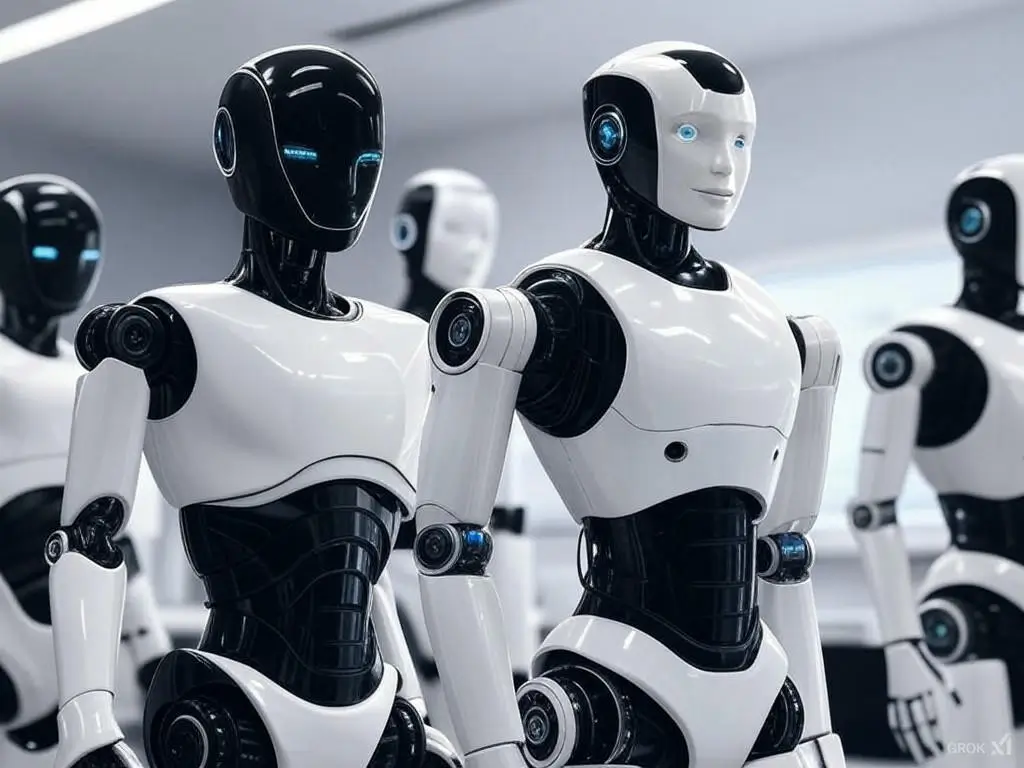Revolutionary AI Humanoid Robots from Unitree, Tesla, and Figure Leave the Internet Awe-Inspired!

The world of robotics is undergoing a dramatic transformation, with several key players making significant strides in the development of advanced humanoid robots. From synchronized dance performances at major festivals to cutting-edge training methodologies aimed at making robots more agile and human-like, these innovations are captivating audiences and sparking discussions across the globe. Let's dive into the impressive advancements brought forth by companies like Unitree, Tesla, Figure, and their evolving technology.
Unitree’s H1 Robots Dazzle at the Spring Festival Gala
Recently at the Spring Festival Gala in China, a remarkable performance by a group of 16 humanoid robots from Unitree stole the spotlight. These robots executed a traditional Yangge dance alongside human dancers, showcasing synchronous movements that included tossing and catching handkerchiefs with impressive stability and coordination. This feat is particularly striking given that many current humanoid robots struggle to maintain balance even when pushed gently.
Standing 1.8 meters tall and weighing about 47 kg (approximately 104 pounds), Unitree’s H1 robots have been rigorously trained using AI and laser SLAM technology for optimal positioning. Their performance was not only a celebration of cultural artistry but also a testament to the rapid advancements being made in robotics. As the world takes notice, critiques of other humanoid robots, such as Tesla’s Optimus, highlight the significant progress Unitree has made in terms of stability and control.
Figure’s Bold Move
Another notable development comes from Figure AI, a company pursuing humanoid robots tailored for various applications. After raising around $675 million last year, which boosted their valuation to an impressive $2.6 billion, Figure made headlines by announcing the end of their partnership with OpenAI. CEO Brett Adcock explained that the company has achieved significant breakthroughs and is shifting toward developing in-house AI capabilities. This change reflects a growing belief that fully integrating hardware and software is crucial for creating effective humanoid robots.
Interestingly, Figure AI is focusing on industrial applications, with trials already occurring in BMW factories. If successful, this could pave the way for widespread automation in manufacturing sectors, underscoring the market's readiness to embrace advanced robotic solutions.
Tesla’s Optimus and Emerging Competitors
Elon Musk’s Tesla is another major player in the humanoid robotics race, particularly with the development of its Optimus robot. Musk has publicly proclaimed that the intricate design of Tesla’s robot hand surpasses competitors, while simultaneously engaging in a lighthearted rivalry with companies like Clone Robotics, which employs soft artificial muscles for a potentially more efficient and versatile design. This competition raises intriguing questions about the future of robotic design—will muscle-powered constructs outperform traditional motorized systems?
Innovations from Nvidia and Carnegie Mellon
Meanwhile, Nvidia and Carnegie Mellon University’s joint initiative is pushing the boundaries of humanoid capabilities through a new framework named ASAP (Aligning Simulation and Real-World Physics). This innovative approach aims to teach robots how to perform complex tasks, such as sports moves and dance routines, by leveraging videos of famous athletes. By refining these simulations to handle the nuances of real-world physics, researchers aim to unlock new levels of agility and expressiveness in robots.
However, challenges persist, as simulations often struggle to transfer accurately to physical embodiments, primarily due to complications like motor overheating and mechanical stress. Addressing these challenges requires integrating adaptive policies to ensure robots can handle the rigors of real-world applications without compromising their performance.
The Future of Humanoid Robotics
The race to develop the most sophisticated humanoid robots is intensifying worldwide. As companies like Unitree, Figure, and Tesla push their innovations, the landscape is becoming ripe with possibilities. From commercial applications in factories to potential roles in home environments, the way we perceive and interact with autonomous robotic systems is set to evolve dramatically.
In a world where cultural showcases, industrial applications, and competitive design practices shape the narrative, one thing is clear: the robot revolution is not just on the horizon; it has already begun, leaving the internet and audiences alike in awe of what the future holds.
